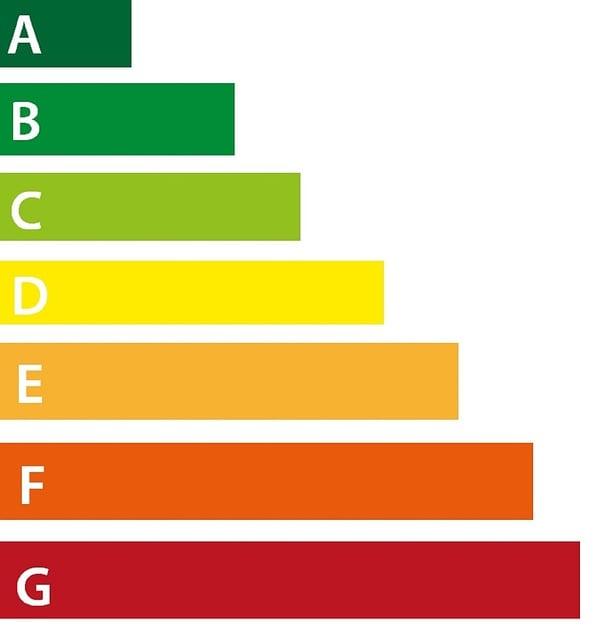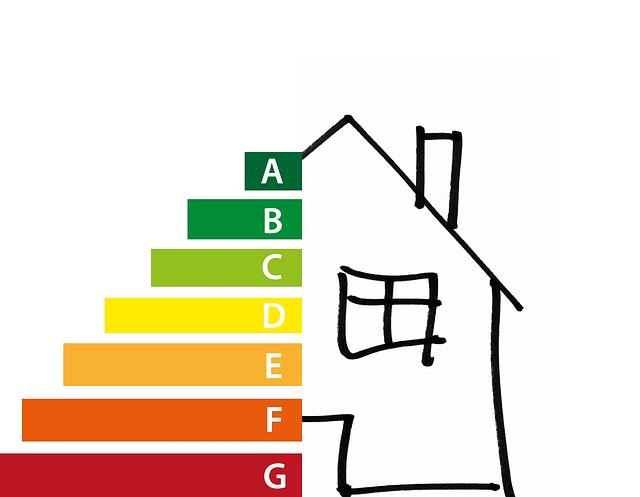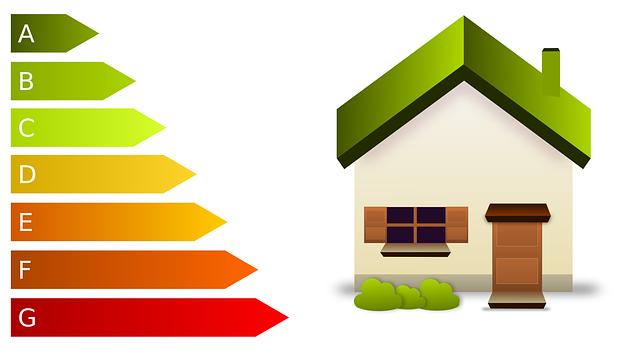Table of Contents
- Understanding the Concept of Energy Efficiency Mortgages
- Benefits of Energy Efficiency Mortgages for Homebuyers
- Key Features to Look for in an Energy Efficiency Mortgage
- Steps to Secure an Energy Efficiency Mortgage Successfully
- Maximizing Your Energy Savings Through Strategic Upgrades
- Q&A
- Closing Remarks


Understanding the Concept of Energy Efficiency Mortgages
Energy efficiency mortgages (EEMs) are innovative financial tools designed to encourage homeowners to invest in energy-efficient improvements during the home purchasing or refinancing process. By integrating the cost of energy upgrades into the mortgage, borrowers can reduce both their monthly housing expenses and their overall environmental impact. EEMs are backed by various government programs, making them an appealing option for eco-conscious buyers and those looking to enhance the value of their homes.
One of the standout benefits of energy efficiency mortgages is their potential to lower utility bills significantly. When homeowners upgrade to energy-efficient systems—such as better insulation, high-efficiency heating and cooling systems, or ENERGY STAR-rated appliances—they can expect reduced energy consumption. This not only saves money in the long run but also contributes to a more sustainable lifestyle. Consider the following enhancements that can qualify for financing under EEMs:
- Upgraded HVAC systems
- Energy-efficient windows and doors
- Solar panel installations
- Smart home technology
For homeowners contemplating the switch, understanding how these loans function is crucial. EEMs typically allow buyers to borrow more than the property’s value, taking into account the anticipated energy savings from the upgrades. These savings can translate into a lower debt-to-income ratio, making loan approval easier. Here’s a simple breakdown of the process:
| Step | Description |
|---|---|
| 1. Pre-approval | Determine eligibility based on financial health and energy-saving assessments. |
| 2. Property Assessment | Evaluate the home’s current energy efficiency and potential upgrades. |
| 3. Mortgage Application | Complete the mortgage process, including integration of energy costs. |
| 4. Home Improvements | Implement approved energy upgrades after closing the mortgage. |


Benefits of Energy Efficiency Mortgages for Homebuyers
Energy efficiency mortgages (EEMs) present a compelling option for homebuyers looking to invest in properties that not only offer contemporary comforts but also promote sustainability. These financial products allow buyers to finance the cost of energy-efficient improvements as part of their mortgage, effectively lowering the barrier to entry for adopting greener technologies in homes. By utilizing an EEM, homeowners can reduce their overall energy consumption, which often leads to significant cost savings in utility bills over time.
Moreover, qualifying for an energy efficiency mortgage can provide buyers with access to lower interest rates and favorable lending terms. Lenders often recognize that energy-efficient homes are inherently more valuable due to lower utility costs and reduced environmental impact. Homebuyers can benefit from this perceived value through potential tax benefits and incentives that further enhance the financial attractiveness of securing an EEM. In addition, homes with energy-efficient features tend to have higher resale values, creating an appealing long-term investment opportunity.
From an environmental standpoint, choosing to finance energy-efficient upgrades contributes significantly to reducing a household’s carbon footprint. By investing in technologies such as solar panels, improved insulation, and ENERGY STAR-rated appliances, homeowners are actively participating in the shift towards sustainable living. Additionally, many local and federal programs provide additional benefits for energy-efficient home investments, making this type of mortgage not just a smart financial decision, but also a step towards a healthier planet.
| Feature | Benefit |
|---|---|
| Energy-efficient upgrades | Lower utility bills |
| Lower interest rates | Reduced monthly payments |
| Increased home value | Higher resale potential |
| Environmental impact | Reduced carbon footprint |
| Tax incentives | Extra savings |


Key Features to Look for in an Energy Efficiency Mortgage
When exploring the world of energy efficiency mortgages, it is essential to identify specific features that can maximize the benefits of your investment. One of the most important aspects is loan options designed to cover energy-efficient upgrades in addition to the home’s purchase price. These may include Fannie Mae’s HomeStyle Energy loan or FHA’s Energy Efficient Mortgage program. Understanding these options allows homeowners to finance improvements that can significantly reduce utility costs over time, enhancing both comfort and affordability.
Another crucial feature to consider is the assessed energy performance of the property. Lenders often utilize energy audits or assessments that detail how energy-efficient a home is, reflecting its potential for reducing energy consumption. Properties with high energy efficiency ratings might attract better financing terms, ultimately leading to lower monthly payments. It’s advisable to look for mortgages that offer incentives based on these ratings, as they encourage homeowners to invest in energy-saving improvements.
Furthermore, integration with renewable energy financing options can greatly enhance the value of an energy efficiency mortgage. This can include the ability to finance solar panels, geothermal systems, or other sustainable energy sources alongside the mortgage. These features not only promote a greener lifestyle but may also qualify homeowners for additional tax credits or rebates. A comprehensive energy efficiency mortgage will provide flexibility in blending various financing opportunities, making it easier to transition to a more sustainable living environment.
Steps to Secure an Energy Efficiency Mortgage Successfully
Securing an energy efficiency mortgage involves a few critical steps that can help streamline the process and ensure you take full advantage of the benefits offered. First, it’s essential to conduct thorough research on different lenders, as not all institutions provide the same energy efficiency options. Look for lenders who are knowledgeable about energy-efficient home investments and have experience with government programs like the Energy Efficient Mortgage (EEM) program. This will help you identify suitable financial products tailored for your energy-efficient upgrades.
Once you’ve gathered a list of potential lenders, it’s time to get your financial documents in order. A proper understanding of your credit score, income history, and existing debts is crucial. Compile the following documents to boost your chances of approval:
- Recent pay stubs
- Tax returns from the last two years
- Bank statements for the previous 3-6 months
- A detailed list of existing debts and monthly expenses
- Documentation of any energy-efficient upgrades or proposed improvements
consider working with a qualified energy auditor. An auditor will evaluate your property and provide an assessment that outlines necessary improvements. This documentation can significantly enhance your mortgage application, showcasing the improved value and energy savings potential of your home. Many lenders will appreciate this third-party verification, as it often reflects a higher appraised value for the property, potentially leading to better loan terms and lower interest rates.


Maximizing Your Energy Savings Through Strategic Upgrades
To truly harness the benefits of an energy efficiency mortgage, consider making strategic upgrades to your home. These enhancements not only boost your property’s market value but also significantly reduce energy consumption and utility bills. Investing in energy-efficient appliances is a great starting point. Look for products with the ENERGY STAR label, which indicates superior energy performance. Examples include:
- Refrigerators – newer models use less energy and benefit from advanced insulation.
- Washing Machines – opted for high-efficiency machines that consume less water and energy.
- HVAC Systems – upgrading to a high-efficiency heating and cooling system can drastically reduce energy costs.
Another critical upgrade involves enhancing your home’s insulation. Proper insulation helps maintain temperatures, reducing the need for heating and cooling. Focus on key areas such as:
- Attic Insulation – a well-insulated attic can save you up to 20% on heating and cooling.
- Window Sealing - invest in double-glazed windows or apply weather stripping to prevent drafts.
- Basement Insulation – insulating basement walls can significantly reduce heating demands.
Lastly, consider integrating renewable energy sources into your home. Installing solar panels not only reduces reliance on non-renewable energy but can also provide significant tax credits and incentives. As you contemplate upgrades, calculate the return on investment (ROI) to determine which enhancements will yield the most savings. Here’s a simple comparison of potential savings:
| Upgrade Type | Estimated Annual Savings |
|---|---|
| High-Efficiency HVAC System | $500 – $1,000 |
| Energy-Efficient Appliances | $100 – $300 |
| Solar Panel Installation | $800 – $2,000 |
Q&A
Q&A: Understanding Energy Efficiency Mortgages
Q1: What is an Energy Efficiency Mortgage (EEM)? A1: An Energy Efficiency Mortgage (EEM) is a type of mortgage that allows borrowers to finance energy-efficient upgrades to their homes. It enables you to borrow additional funds beyond the regular mortgage amount to cover the cost of energy-saving improvements, making it easier to lower energy bills and enhance your home’s value.Q2: How does an Energy Efficiency Mortgage work? A2: An EEM works similarly to a traditional mortgage, but with a twist. When you apply, the lender considers the projected energy savings from the improvements you intend to make. This can help you qualify for a larger loan, as lower energy costs mean your monthly expenses may decrease. The energy-efficient upgrades can include anything from better insulation to energy-efficient windows and HVAC systems.
Q3: Who is eligible for an Energy Efficiency Mortgage? A3: Generally, any homebuyer or homeowner looking to refinance may be eligible for an EEM. This includes first-time buyers, repeat buyers, and those refinancing their existing mortgages. However, specific criteria vary based on the lender and the type of mortgage program offered. It’s advisable to check with your lender for detailed eligibility requirements.
Q4: Are there any specific energy-efficient upgrades that qualify for an EEM? A4: Yes, common upgrades that qualify for an EEM typically include energy-efficient appliances, improved insulation, high-efficiency heating and cooling systems, new windows or doors, solar panels, and smart home technology designed to conserve energy. It’s best to consult your lender or a qualified energy consultant for a comprehensive list and to discuss your specific project.
Q5: What are the benefits of choosing an Energy Efficiency Mortgage? A5: The benefits of an EEM are multi-faceted. Primarily, it allows homeowners to lower their utility bills, increase property value, and enhance indoor comfort. Additionally, energy-efficient homes often sell faster on the market. Furthermore, many lenders may offer favorable terms, such as lower interest rates or reduced down payment requirements, making homeownership more achievable.
Q6: Can I get an Energy Efficiency Mortgage with a low credit score? A6: While a lower credit score may present some challenges, it does not automatically disqualify you from obtaining an EEM. Many lenders are willing to work with borrowers with varying credit histories, especially if they have a steady income and can demonstrate financial responsibility. It’s always a good idea to discuss your options with multiple lenders to find the best terms.
Q7: Is the application process for an Energy Efficiency Mortgage different from a standard mortgage? A7: The application process for an EEM is similar to that of a traditional mortgage, but with additional steps to evaluate the energy-efficient features of the home. You may need to provide details about the intended upgrades, as well as an energy audit to determine potential savings. Be prepared to demonstrate how the improvements will enhance your home’s energy efficiency.
Q8: How do I find a lender that offers Energy Efficiency Mortgages? A8: Finding a lender that offers Energy Efficiency Mortgages can be as simple as checking with local banks, credit unions, or mortgage brokers. Additionally, government-backed programs like those from the Federal Housing Administration (FHA) and the Department of Veterans Affairs (VA) may also offer EEM options. Research and comparison are key to finding the best fit for your needs.
Q9: Are there any downsides to Energy Efficiency Mortgages? A9: While EEMs have many advantages, there are potential downsides to consider. The additional debt can impact your overall financial situation, and if the expected energy savings do not materialize, you may find yourself in a tighter financial position. Additionally, the upfront costs of the energy improvements may require you to be financially prepared, even with the mortgage benefits.
Q10: What should I do next if I’m interested in an Energy Efficiency Mortgage? A10: If you’re intrigued by the concept of an Energy Efficiency Mortgage, the next steps involve conducting thorough research. Start by assessing your home’s energy efficiency potential, gathering information on suitable upgrades, and consulting with multiple lenders to explore available options. Lastly, consider speaking with a financial advisor to ensure an EEM aligns with your long-term financial goals.
Investing in an Energy Efficiency Mortgage can lead to a greener, more economical home while providing peace of mind and future savings. Whether you’re a first-time buyer or looking to upgrade your existing property, understanding this innovative mortgage option could make all the difference.




0 Comments